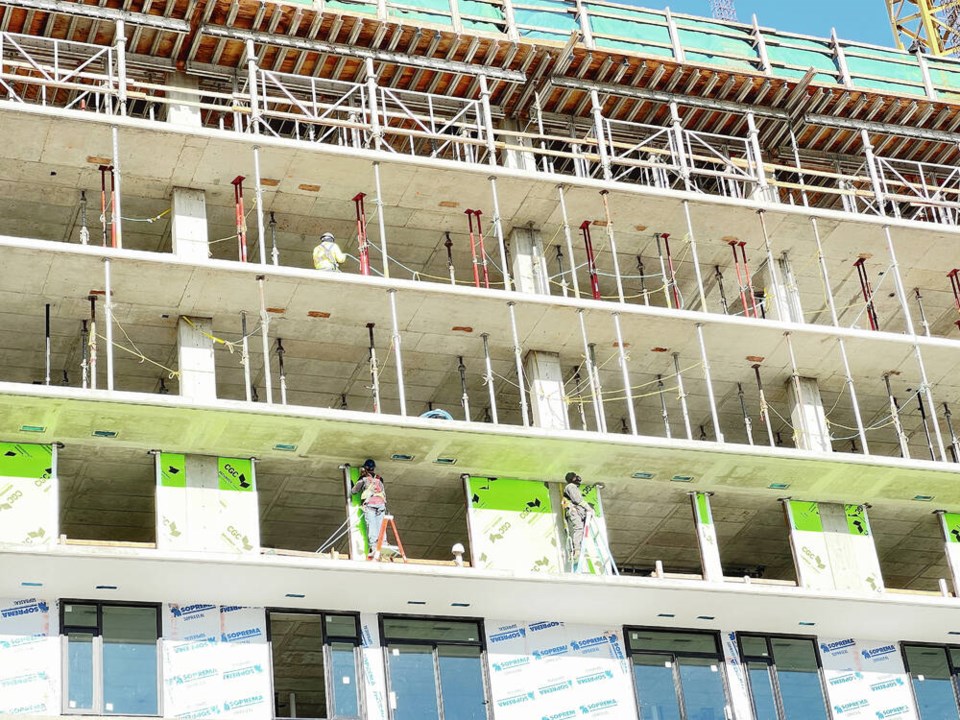A commentary by a retired urban planner who lives in Saanich.
When my son was in Beavers or maybe Cubs, there was a popular campfire skit. It involved one cub holding a flashlight (pretending to be a streetlight) and another crawling around underneath.
A third Cub comes up and says “have you lost something?…and starts helping the second Cub, crawling around under the streetlight…and a fourth arrives…and a fifth.
The sixth Cub arrives and asks the question “where did you lose your dime?”
The reply is “I lost it over there, but I am looking here ’cause that’s where the light is.”
Much hilarity for all concerned!
I was reminded of this as I read the academic study that the provincial government relied on to justify their recent housing policies, and which Adam Olsen, B.C. Green MLA for Saanich North and the Islands, demanded they release.
It is a very hefty tome, full of academic jargon and equations, and conclusions, which reappear in the government’s press releases.
I dutifully read through it, thought about it, read it again. The report is focused on the concepts of the elasticities of supply and demand in the housing system.
Demand elasticity is defined as “the measure of the sensitivity of demand for housing to changes in the price of housing or other factors like … income, prices, or population.”
The theory is that increasing the elasticities of demand and supply will make the housing system more responsive to demand, more housing units will be built and the price will fall.
That summary does a vast injustice to the reports’ authors. You will have to read the 200-plus pages to get the full picture.
But it seems to me that something is missing from their analysis. What the authors never detail is what is “demand” — who is demanding housing, and what are their characteristics and demographics.
Demand is an abstraction, unrelated to real people. I am not sure why they ignore this: maybe there just weren’t enough data or it didn’t seem important to ground their study in the nitty-gritty of people’s lives.
The data are there. They could have looked at the report that was presented to Saanich council in May on the subject of a definition of housing affordability.
It showed clearly that between 20 per cent and 50 per cent (depending on the definition of “affordable”) of households in Saanich can’t afford to rent or own, regardless of whether demand becomes less inelastic.
The authors’ proposal, which has now become the government’s, is to massively increase the supply of housing by building more multiplex housing on previously single family lots.
As an urban planner, I recognize the many benefits that will flow from densification (as long as other services such as transportation and recreation are also increased).
But increasing the supply of housing raises the question, unaddressed in the report: Who is going to buy or rent these additional units — the demand for housing?
And since there is likely to be only a marginal decrease in the price of housing, it will not be that 20 per cent to 50 per cent of residents who can’t afford housing now. The most likely scenario is that this additional housing will be occupied by the same groups who can afford housing now.
Some of those are local people with sufficient assets for a down payment or a job that pays enough for the increasingly elevated monthly rent.
But this local market will continue to be topped up considerably by out-of-town buyers, who might be from Vancouver (selling an even more expensive house there), Alberta (retiring), the United States (think Trump re-elected), China (foreign student housing) or anywhere.
There is very little hard data on the demographics of these in-migrants, but we all have anecdotal evidence, and the linkage of high levels of in-migration and lack of housing is a major issue.
So for street lamp, think academic enlightenment. And we should be looking for answers where the real housing problem is, which is housing affordability, rather than or at the same time as we significantly increase supply in our established neighbourhoods and desirably livable communities.
>>> To comment on this article, write a letter to the editor: [email protected]



